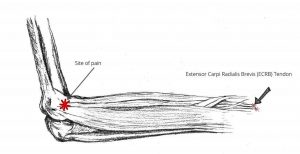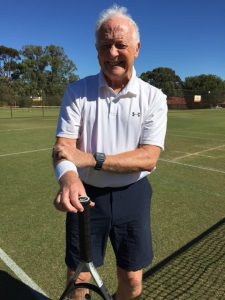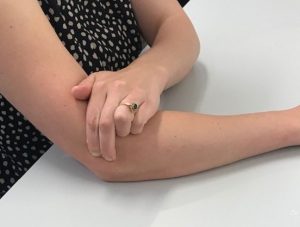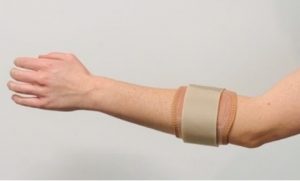ABOUT

‘Tennis Elbow’, also known as Lateral Elbow Tendinopathy is a common overuse condition affecting the tendons that attach to the outside of the elbow. Tennis Elbow is usually caused by repeated overuse of the muscles around the elbow, particularly the muscles which help stabilize or straighten your wrist while your elbow is out straight. It is one of the most common causes of elbow pain.
Tennis Elbow can lead to long term tendon damage if not addressed properly. Read on to learn about the symptoms, causes and treatments for tennis elbow.
SYMPTOMS
If you have Tennis Elbow you may experience any of these symptoms:
- tenderness or pain on the outside bone of your elbow
- pain or soreness of the muscles in your forearm, sometimes radiating above the elbow
- stiffness or aching of your forearm in the mornings
- pain while gripping or carrying objects with your hand or arm
- weakened grip, pain shaking hands
- pain often worse when rotating your forearm and lifting your wrist backwards
RISK FACTORS/CAUSES
Certain risk factors can increase the likelihood of developing Tennis Elbow. Whilst Tennis Elbow can affect anyone of any age, it is most common in adults aged 30-50 years old. It is also most commonly seen in individuals who take part in daily work, hobbies or sports that involve repetitive motions of the arm or forearm.
Tennis Elbow has a number of possible causes. These range from inflammation of the tendons that join the forearm muscles to the bony part of your elbow, to microscopic tears that occur in the tendon from repetitive elbow and forearm motions.
ACTIVITIES WHICH CAN RESULT IN TENNIS ELBOW
 As mentioned before, any activity that stresses or leads to overuse of the involved tendons can cause Tennis Elbow. This can include repetitive sports or work-related activities such as:
As mentioned before, any activity that stresses or leads to overuse of the involved tendons can cause Tennis Elbow. This can include repetitive sports or work-related activities such as:
- tennis and other racquet or stick sports like squash, badminton, hockey or golf
- weight lifting
- gardening and activities like shoveling, pruning
- painting, carpentry, hammering, driving in screws
- typing and repetitive use of computer mouse
NON-SURGICAL TREATMENT
Pain-related to Tennis Elbow can lead to long term damage and tears to the tendon if not properly addressed. When changes take place to the structure of your injured tendon it can become weakened and more susceptible to injury, so it is important to seek advice regarding management as early as possible.
The good news is, our therapists can assess you for the likely presence of Tennis Elbow and if appropriate, fit you with a wrist splint or a ‘Counterforce brace’ to help settle the symptoms and pain. They will also talk to you about possible causes, preventative strategies and specific exercises which are a very important aspect of treatment. See below for a list of possible interventions we may recommend:

- wearing a specially fitted wrist splint, ‘Counterforce Brace’ or taping to help rest the affected tendons and settle pain
- learning how to carefully apply load in the form of specific exercises to encourage your tendon to start to remodel and become stronger
- specific stretches and soft tissue treatment
- discussing alternative ways of performing specific aggravating activities
- gradual strengthening
SURGICAL TREATMENT
If your symptoms don’t settle with conservative management, your GP or Specialist might suggest specific tests to help check the extent of your injury and may recommend other interventions including injections or surgery. At Specialised Hand Therapy Services, we also see many patients referred for post-operative therapy after Tennis Elbow surgery and other interventions, which can be a very important aspect of your recovery.
SPECIALISED HAND THERAPY SERVICES CAN HELP
At Specialised Hand Therapy Services, Tennis Elbow is one of the most common injuries we see. If you are experiencing pain or discomfort in your elbow or forearm then book in with one of our therapists for assessment and advice.

